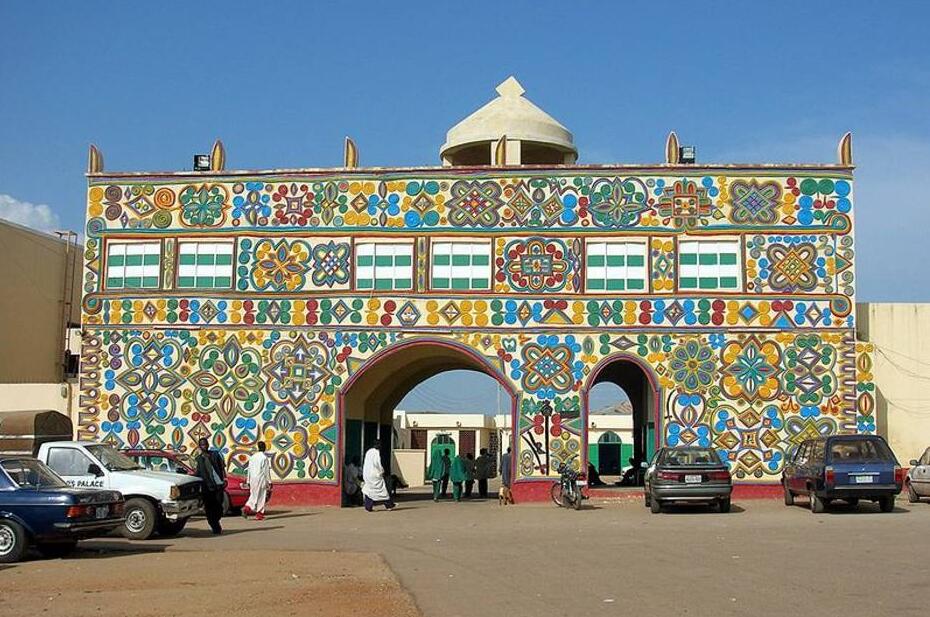Egypt Population and Environment
Urbanism boasts a tradition that dates back to the Pharaonic era: Thebes, in ancient times, was a prestigious city and just as important was Memphis, which developed when the interests of the Egyptian world began to move towards the North; in the sec. IV BC, with Hellenistic supremacy in the Mediterranean area, Alexandria established itself. Cairo it has assumed the role of the highest center of the country after the advent of the Arabs; at the origin of its fortune is the position a short distance from the delta and the coast, thanks to which it acts as a link between the Nile valley and the Mediterranean. The great expansion of the city, however, began in the nineteenth century, with the commercial openings of the country to the modern world, and was accentuated the following century, with the immigration of real masses of fellāḥīn, attracted by the many activities of the capital. Cairo with its urban agglomeration is the largest metropolis in Africa, with a very extensive inhabited area to which large satellite cities such as El-Gîza, Imbâba, Heliopolis are an appendix (in the middle of the desert), El Matarîya etc.; in addition to being a cultural and artistic center of exceptional interest, it hosts the major industrial and commercial companies, but due to its function of capital it is also the seat of bureaucratic and administrative activities that make it at the same time a “wasteful” city and in any case characterized by severe economic and social imbalances. Alexandria, on the Mediterranean, is a typical port city with a predominantly European aspect; it is the first port of the country. Port cities are also Port Said and Suez, enhanced by their position on the Suez Canal (which was closed to traffic from 1967 to 1975). The delta region groups various important cities, commercial centers of densely populated agricultural areas, some headquarters of industries, such as Tanta, El-Mahalla el-Kubra, El-Mansûra, Damanhûr etc. In the Nile valley, on the other hand, the centers are more distant from each other; the main ones are El-Minya, Asyût, Qena, Luxor, Aswân, all built on ancient pharaonic cities: in particular Aswân is the highest pole of Upper Egypt. The increase in urbanization is derived in equal measure from births in urban areas that occurs when rural peri-urban settlements are incorporated into neighboring cities and when the cities of secondary importance, connected by trade to the major urban centers, enlarge.
TERRITORY: ENVIRONMENT
Due to the millenary transformations of man in the Egyptian territory, the vegetation that characterizes the country is almost entirely artificial. The plant landscape is gathered along the course of the Nile and in the oases, where it is almost entirely introduced and controlled by man. The date palm is the sovereign plant, also widespread for the function of shelter that it exercises with its shadow on herbaceous and horticultural crops. Before the transformations made by man, the areas seasonally flooded by the Nilotic waters were occupied by aquatic herbs, papyrus, lotus plants, rushes, etc., vegetation of which there are now small marginal strips. In desert areas there are poor bushy associations with plants of mimosas, tamarisks, jacarandas and acacias in the relatively more favorable traits. Although flora and fauna are relatively scarce, which is typical of arid environments, according to topb2bwebsites, Egypt has a rich biodiversity and numerous natural habitats. In fact, being the country a land of migrations between Asia, Africa and Europe, ornithological species abound in it such as pink flamingos, storks, cranes, eagles, vultures, etc., but there are also sedentary species such as kingfisher, heron and hoopoe.. Some varieties of reptiles live in the desert including vipers and lizards, but also animal species such as the desert fox (fennec), the hyena, the jackal, the pyramid mouse and the mongoose. Furthermore, numerous fish species live in the waters of the Nile and Lake Nasser. As regards environmental problems, oil pollution from industries constitutes a serious threat to coral reefs, beaches and the entire marine ecosystem; moreover, chemical fertilizers from agriculture, industrial waste and untreated sewage drains poison the waters of the Nile on a daily basis. Protected areas represent 11.3% of the total area, within which three national parks and an area declared a World Heritage Site by UNESCO in 2005, the Wadi al-Hitan (Valley of the Whales), are identified.



